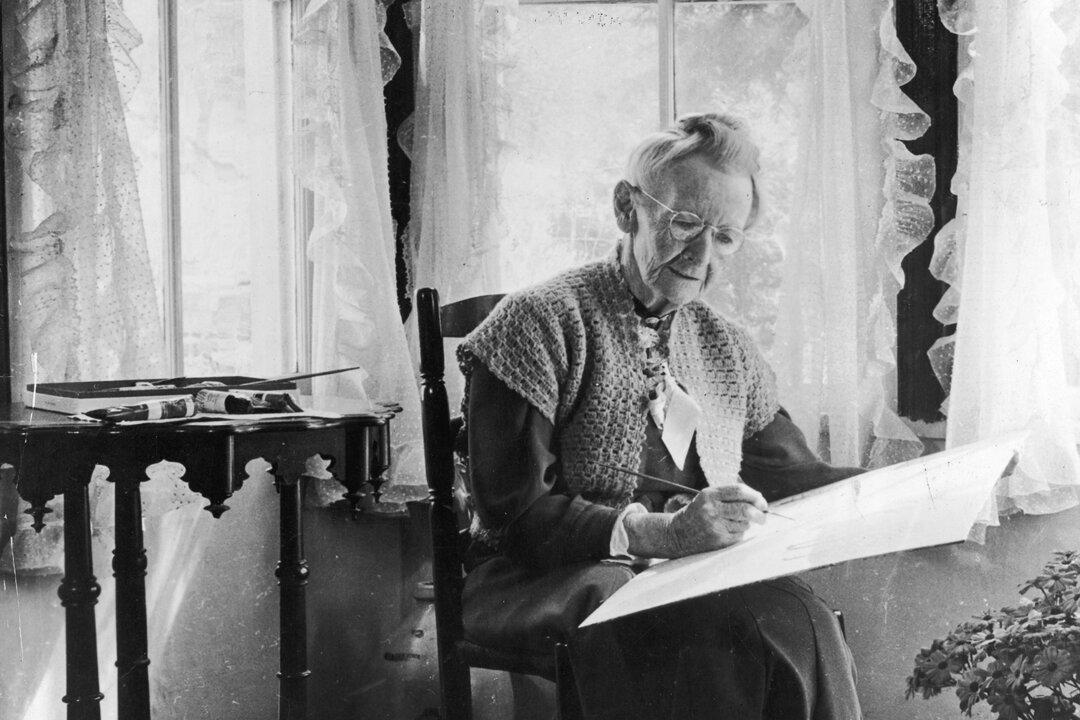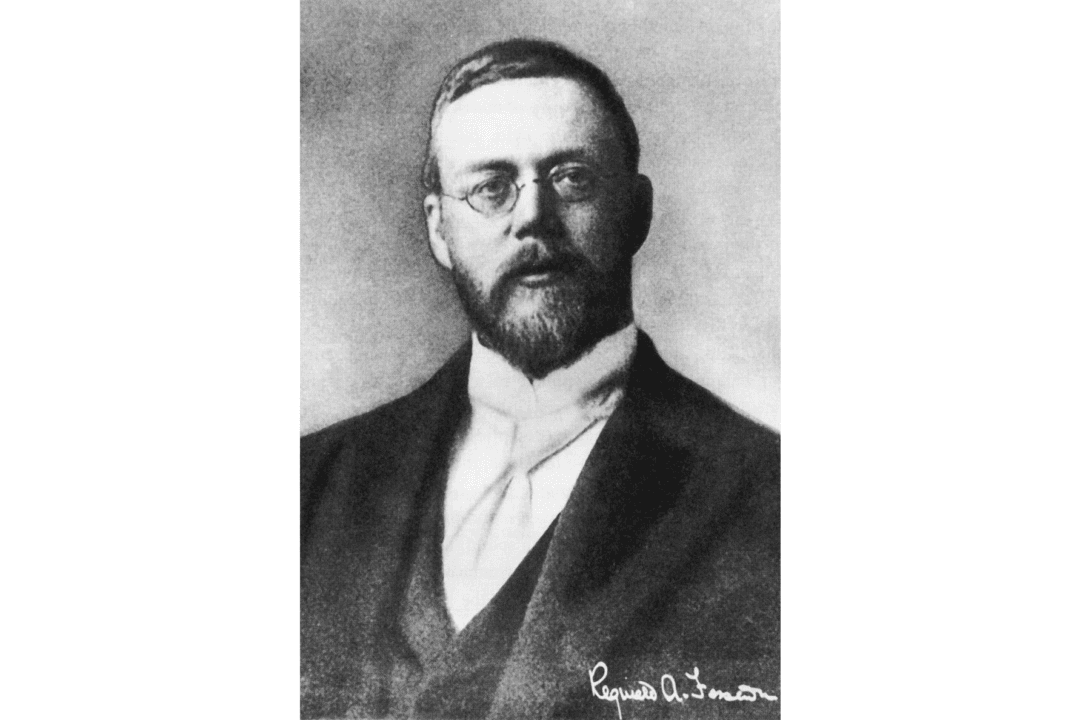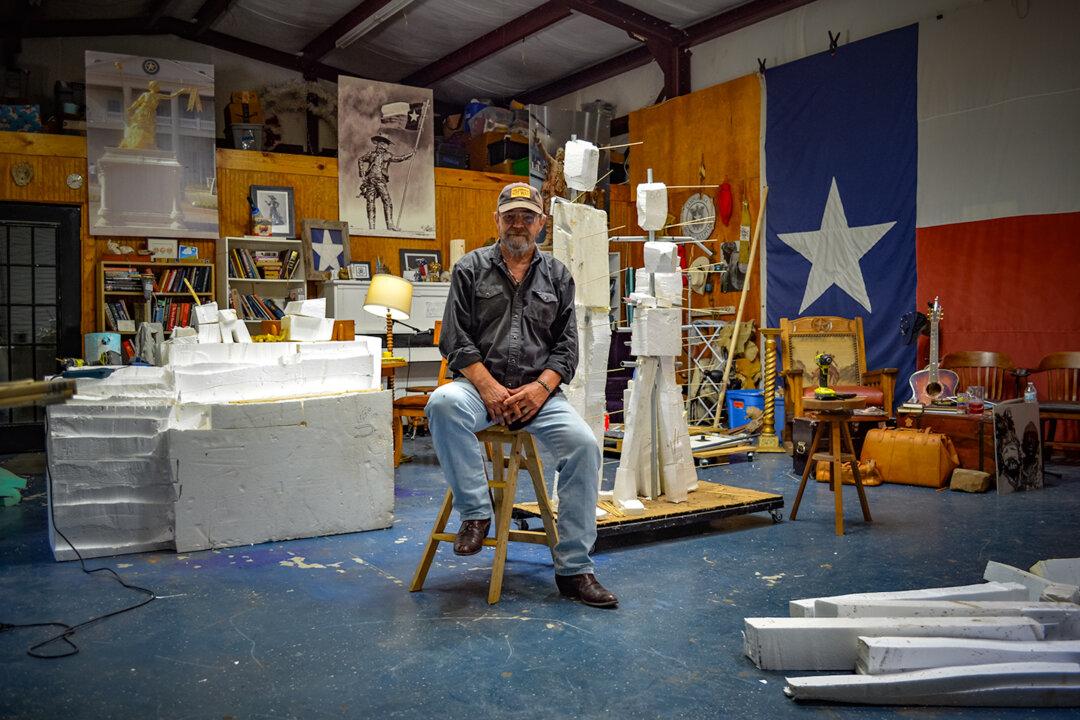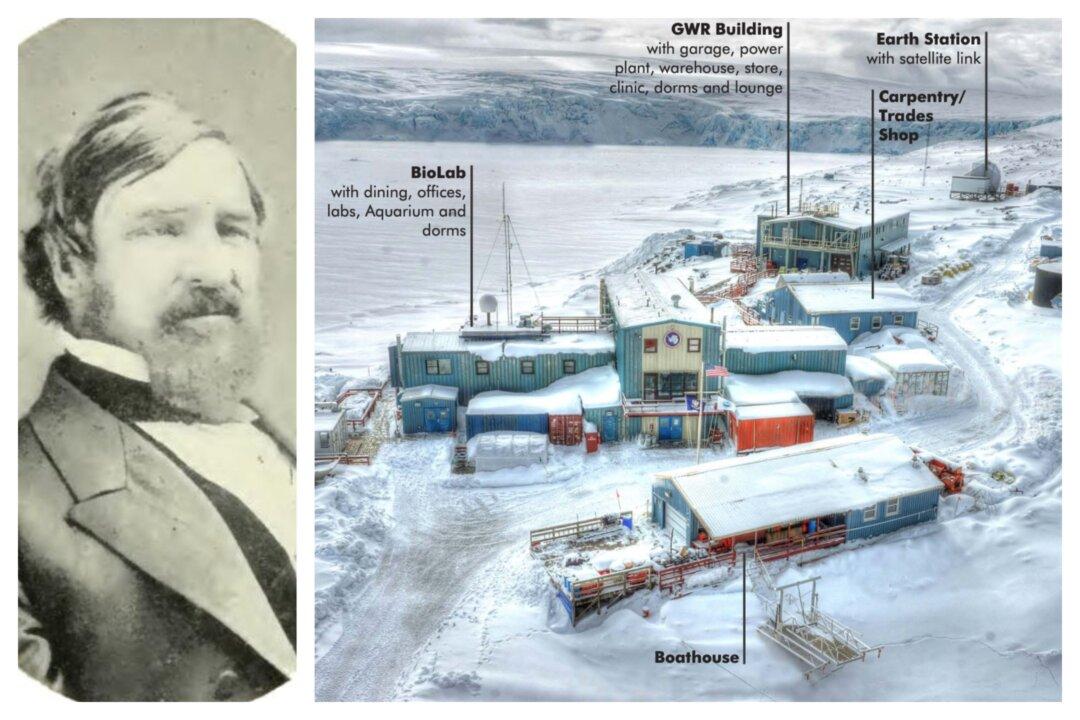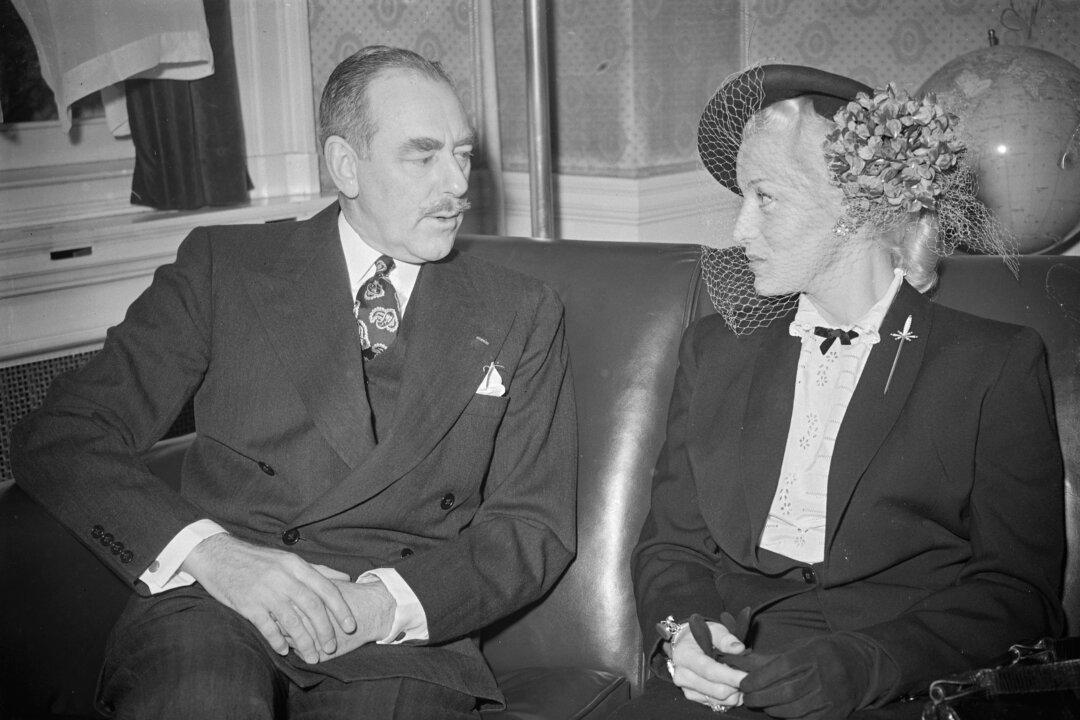Anna Mary Robertson Moses (1860–1961) witnessed the evolution of America. She was born two months before Abraham Lincoln was elected and died nearly a full year into the Kennedy administration. She grew up on a farm and remained on a farm. It was the farm life that she was most known for, but predominantly for her representation of it.
Moses lived most of her life in Eagle Bridge, New York, a small town northeast of Albany near the Vermont border. She gave birth to 10 children (only five of whom survived infancy). When her husband, Thomas Moses, died in 1927, her son and daughter-in-law took over the farm. She began to spend her days with needlework, making quilts, and pictures of fun and bright farm scenes. Soon her lifetime of manual labor, however, made this all but impossible as she developed arthritis. In her late 70s, she decided to put away the needle and pick up the paintbrush.

Painting and drawing had been a love of hers even as a child, when her father had encouraged her artistic side. Now in retirement, her paintings reflected her life on the farm, but with a near pre-industrial flair. Her paintings were often of farmhouses, people, hills, trees, animals, all while leaving out industrial machinery, telephone poles, and the like.
Her paintings were noticed, however, when they were placed in a local drug store window in Hoosick Falls, New York. In 1938, Manhattan-based art collector Louis J. Caldor happened upon the art pieces and purchased all of them. He presented them to numerous New York art dealers, but it wasn’t until he presented them to Otto Kallir, owner of the recently opened Galerie St. Etienne, that Moses would get the surprise of her life. Kallir offered her a contract to paint more pieces.
Moses obliged and by the following year in 1939, several of her pieces were part of a private showing at the Museum of Modern Art in New York. In 1940, she would have her first one-woman art show in New York. The folk artist would become all the rage as the art world would bestow upon her a moniker that would remain throughout her lifetime and well after: “Grandma Moses.”

As the 1940s progressed, so did the demand for her artwork. Hallmark would purchase the rights to reproduce her art in cards. The company sold more than 16 million Grandma Moses Christmas Cards just in 1947; Approximately 50 million have been sold altogether. She would exhibit her work well into her 90s and would paint her final piece only months before her death at 101.


